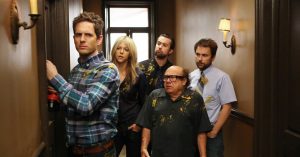Watching Tesla design chief Franz von Holzhausen smash the Cybertruck’s supposedly unsmashable window with a metal ball may have been the most awkward moment of Thursday night’s presentation, but it wasn’t the most confusing. That came when Elon Musk wrapped up the debut of his new electric pickup truck, told the crowd of whooping Tesla fans and harried journalists to enjoy themselves, and walked off the stage.
The departure of the Tesla and SpaceX CEO was perplexing because it made clear that this reveal wouldn’t include the focus on design and engineering that marked the introductions of the Model X, Model 3, Model Y, and a home battery storage solution.
Want the latest news on Tesla in your inbox? Sign up here!
In the 25-minute presentation at SpaceX headquarters in Los Angeles, Musk harped on the toughness of the pickup truck, a key attribute for a vehicle meant to challenge the likes of the Ford F-150 and Chevrolet Silverado. The Cybertruck is made of the same stainless steel alloy SpaceX uses for its Starship spaceship, and it can withstand attack from a 9-millimeter handgun. The glass is also meant to be bulletproof, but either it isn’t or von Holzhausen needs to get himself registered as a lethal weapon.
Musk rattled off some key specs for the truck, which will come in three variants: The $39,000 base version will offer 250 miles of range and a tow rating of 7,500 pounds. For $49,000, you get 300 miles and tow 10,000 pounds. Those should enter production by the end of 2021. If you can wait another year, the $69,900 Cybertruck will go 500 miles on a charge and pull a monstrous 14,000 pounds. Those power figures easily match what conventional pickups can move; the 14,000-pound figure would make the Cybertruck the most capable hauler among commercial vehicles.
What Musk didn’t do was explain the Cybertruck. He didn’t say why the trapezoidal vehicle resembles a 22nd-century paperweight. He mentioned the approach angle—an important detail for off-roading—but not aerodynamics, vital for squeezing miles from lithium-ion batteries. He didn’t discuss engineering, like how the top-line Cybertruck will use three motors (one on the front axle and one on each rear wheel is a good bet). He didn’t discuss Autopilot, Tesla’s somewhat self-driving feature, or how it might help pickup drivers. The CEO showed a video of the Cybertruck beating an F-150 in a tug-of-war, but he didn’t say what variant of the Ford he used.
By contrast, consider the 2017 introduction of the Tesla Semi, where Musk reveled in the 18-wheeler’s engineering and design details that diverged from the status quo not for the sake of it, but for tangible improvements. Like how putting the driver’s seat in the middle of the cab improves visibility, as does the shortened nose, an upshot of removing the engine. How the twin touch screens would let truckers control both the vehicle and their work, and how onboard sensors and smart software would prevent jackknifing. There, he put detailed numbers on display, breaking down the routes the truck could run, and when going with batteries would trump the traditional diesel.
Those are hallmarks of a Musk presentation and of Tesla vehicles. The company’s weaknesses have always stemmed from practicalities: missed deadlines, cost overruns, unreliable profits, less-than-sterling quality. And Musk gets himself in trouble on Twitter, starting fights with government agencies and strangers that distract from the automaker’s core business. The cars, though, have always made up for those faults. However questionable Tesla’s long-term prospects and valuation (more than Ford! more than GM!), it has always landed its sales pitches.
Musk has an intrinsic ability to convince people that his vehicles are not just the best electrics on the road, but the best of any kind, because Tesla rethinks every feature and facet. But on stage Thursday night, Musk spent more time mocking the “Built Ford Tough” slogan than positioning his vehicle as something that would be more fun to drive than the perennially best-selling F-150.
Why is hard to discern. The Cybertruck is at least two years away, but so was the Semi when Musk first showed it off. Tesla might have had too much in the pipeline—the Semi, the revamped Roadster, and the Model Y are all due out next year—to focus on this truck. But current obligations have never stopped Musk from signing up for more work. (See: Boring Company.) Perhaps it was a rush job, a theory that might explain the broken windows. Or maybe that gaffe threw Musk so far off his game that he couldn’t lay out his argument.
Whatever the reason, Musk didn’t put much heart into this latest presentation, and investors don’t seem impressed: Tesla’s stock price dropped by more than 6 percent on Friday. To be sure, Tesla rethought the pickup truck, at least in looks and materials. But the lack of detail, of explanation, of a real pitch should make you wonder just how real any of it is. It certainly doesn’t feel much like a Tesla, because Musk didn’t sell it the way he has always sold his cars: as smarter, cooler, faster, stronger, safer, tougher, and better for humanity than anything plying the roads today. He seems to have settled for offering something different.
More Great WIRED Stories
- For N. K. Jemisin, world-building is a lesson in oppression
- Drawing with drones over the salt flats of Bolivia
- 16 gift ideas for frequent travelers
- Andrew Yang is not full of shit
- Inside Olympic Destroyer, the most deceptive hack in history
- 👁 A safer way to protect your data; plus, the latest news on AI
- 🎧 Things not sounding right? Check out our favorite wireless headphones, soundbars, and Bluetooth speakers



